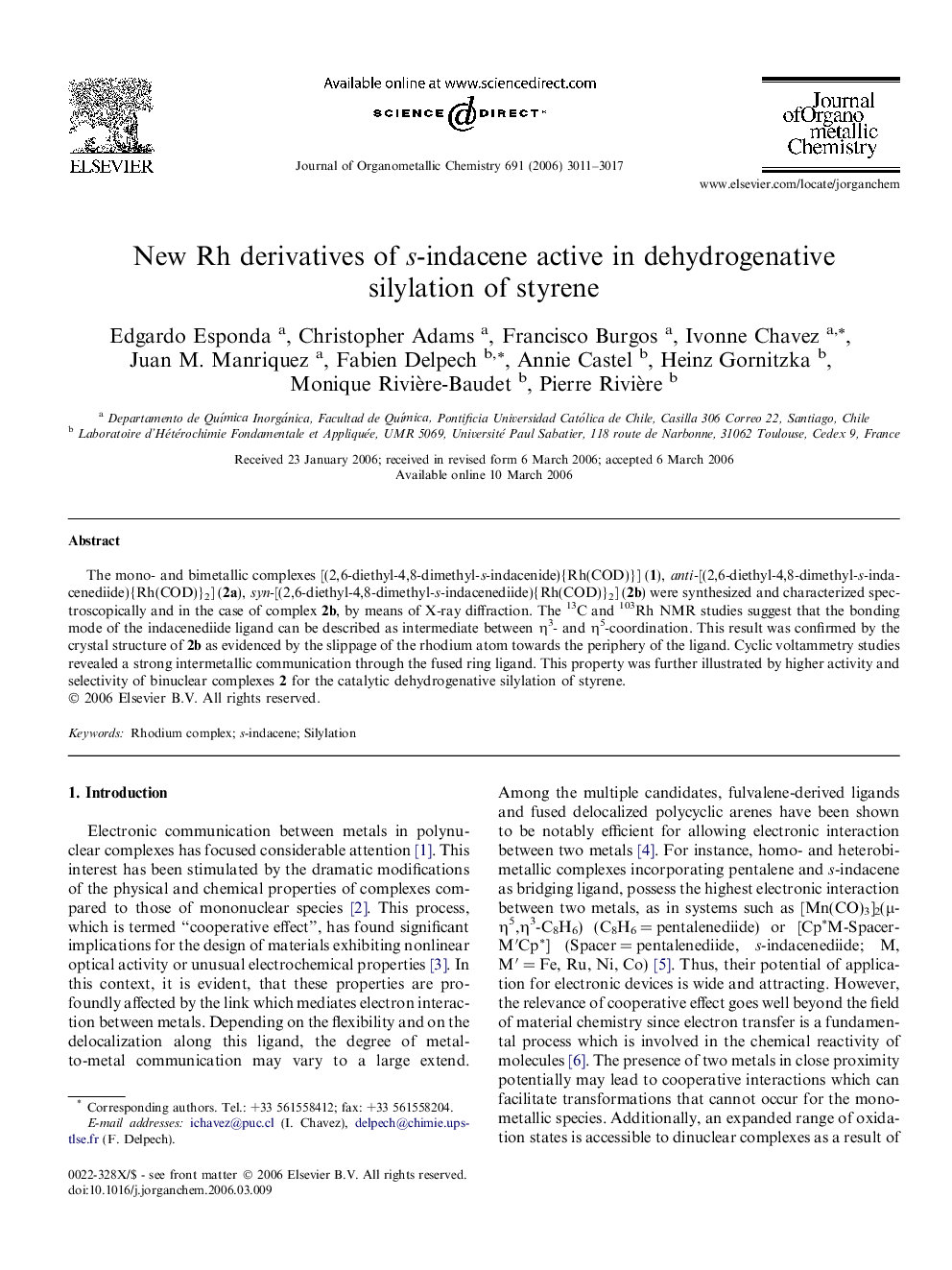| Article ID | Journal | Published Year | Pages | File Type |
|---|---|---|---|---|
| 1327533 | Journal of Organometallic Chemistry | 2006 | 7 Pages |
The mono- and bimetallic complexes [(2,6-diethyl-4,8-dimethyl-s-indacenide){Rh(COD)}] (1), anti-[(2,6-diethyl-4,8-dimethyl-s-indacenediide){Rh(COD)}2] (2a), syn-[(2,6-diethyl-4,8-dimethyl-s-indacenediide){Rh(COD)}2] (2b) were synthesized and characterized spectroscopically and in the case of complex 2b, by means of X-ray diffraction. The 13C and 103Rh NMR studies suggest that the bonding mode of the indacenediide ligand can be described as intermediate between η3- and η5-coordination. This result was confirmed by the crystal structure of 2b as evidenced by the slippage of the rhodium atom towards the periphery of the ligand. Cyclic voltammetry studies revealed a strong intermetallic communication through the fused ring ligand. This property was further illustrated by higher activity and selectivity of binuclear complexes 2 for the catalytic dehydrogenative silylation of styrene.
Graphical abstractThe synthesis and the characterization of mono and bimetallic rhodium complexes are described. The crystal structure of syn-[(2,6-diethyl-4,8-dimethyl-s-indacenediide){Rh(COD)}2] confirms the 13C and 103Rh NMR studies which suggest a bonding mode of the indacenediide ligand in between η3 and η5. The complexes were shown to be highly active for the catalytic dehydrogenative silylation.Figure optionsDownload full-size imageDownload as PowerPoint slide
